18+ Different Types Of Willow Trees With Pictures
Your first knowledge of the legendary willow tree must be from Pocahontas or the Lord of the Rings. Its drooping branches make it a scenic tree, but did you know that there are 400 species that are related to the willow tree? Aside from that, willow trees are also commendable for landscapes, especially in making live fences.
If you are considering willow trees for your home landscape, here is a roundup of some useful information in caring for willow trees along with the most popular types that you can choose from. So, if you are ready for everything about willow trees, read on.
In this article:
Related: Types of oak trees | Types of palm trees | Types of hickory trees | Types of poplar trees | Types of Birch Trees | Types of Trees | Types of walnut trees
Weeping willow trees facts
Before we get serious with the types of willow trees, here are interesting facts that you should know about the weeping willow tree.
- Aside from its drooping branches, it also gets the ‘weeping’ name from the tear-shaped raindrops that fall from the leaves.
- Weeping willows normally shed foliage during winter and its leaves typically change colors as seasons progress.
- Willows have an aggressive root system, sometimes growing larger than the willows’ stems themselves. They also damage underground structures like pipes and sewers.
- The catkins of willows are full of nectar which are important in wildlife conservation and biodiversity.
- Willows are one of the fastest growing trees in the world, growing at 10ft per year.
- Willow trees are not just ornamental; they are also known for their contribution to basketry, carving, and for their medicinal uses, thanks to its salicin content.
- Willow dyes are extracted to be used as a tanning component to leather.
- It is a short-lived tree as it could only live for just 30 years.
Willow trees symbolism

The willow tree, strikingly, is a well referenced tree in various folklore and mythologies of cultures around the world. It is also present in historical archives. As such, one can say that it is truly a symbolic tree. True to this, here are some symbols attached to the willow tree.
- Willows are representations of fertility. The Native American tribes believe that putting a willow branch underneath the pillow of a woman or dancing around the tree could help in conception.
- The willow branch is also a witch’s symbol as it is believed that witch brooms are made from the twigs and branches of this tree. This belief is common in Ireland and Scotland.
- For the Celtics, willows represent the magic and mysticism of water. It is also the 5th tree of the arboreal zodiac.
- Greeks associate the willow as the branch of the afterlife because it regenerates easily.
- For the Jews, worshipping willow trees brought about rain and represents bountiful harvest.
- For the Christian faith, willows represent purity and chastity as well as a symbol of reverence to God.
Willow trees and shrubs identification
You can identify willow trees with their simple leaves, mostly long and narrow with serrated edges. They shed during fall, with colors in between light green, dark green, bluish green and colorful flecks. They are also known for their branches following a drooping habit, a bit soft, brittle and twisted.
Here are some categories of willows that could help you identify willow trees too.
- Tree willows: They are large shrubs or full-grown trees with prominent lancing leaves.
- Osier willows: They are also known as the basket willows, distinct for their upright branches, and long, narrow leaves.
- Sallows: They are shorter, low-growing willow shrubs unique for their ovate, and rounder leaves.
Types of willow trees
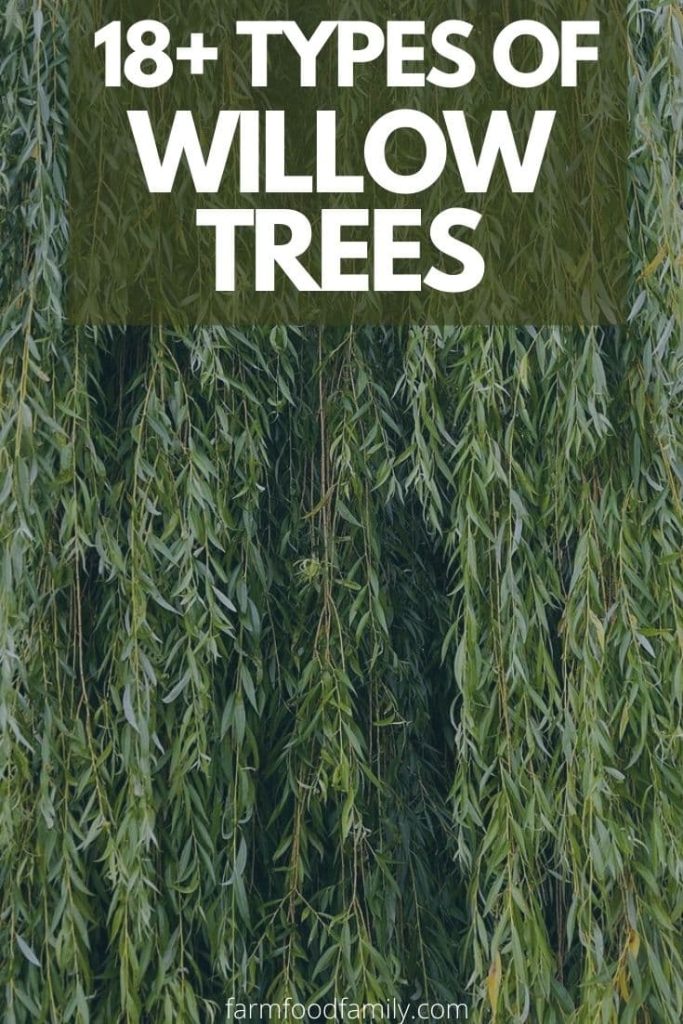
There are hundreds of willow tree types, but the following are some of the most notable ones. If you are looking for willow trees that go beyond just being ornamental plants, here are the types of willow trees that you should check out.
1. Almond Willow (Salix Triandra)
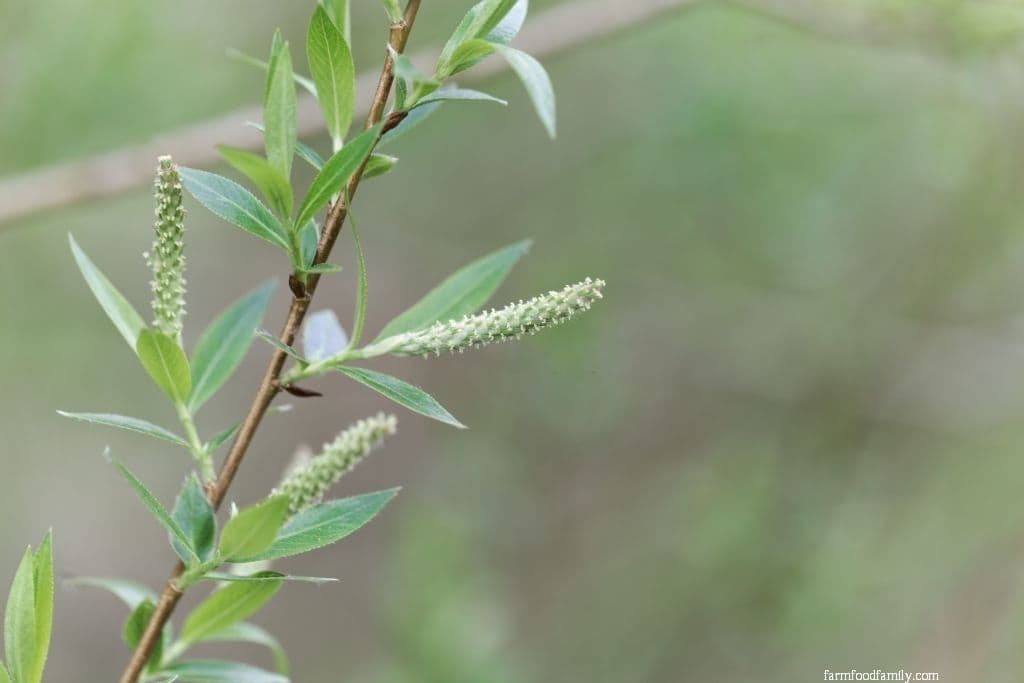
This one is named as such because of its olive to dark green and almond shaped leaves. Yellow catkins of the almond willow appear during spring, along with its foliage. It is a medium size willow, growing to only 35ft. It is, however, prized for its many uses.
One, it is extensively used in honey production through producing nectar. Two, it is also used in basketry and as a biofuel source. The inner bark of almond willow is also dried and powdered to be used as flour. Overall, it is also a good ornamental shrub for hedging and for soil erosion control.
Related: 39 Small and Dwarf Evergreen Shrubs For Small Landscapes
2. American Pussy Willow (Salix discolor)
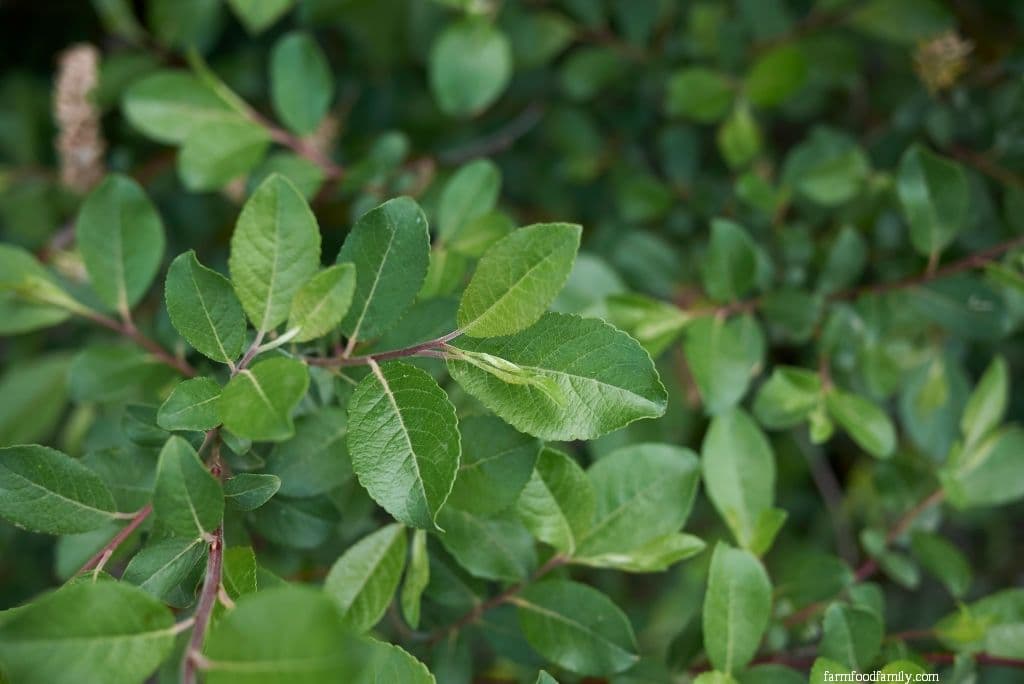
Generally, pussy willows are cultivated because they are important in floral design. They are also popular in landscaping specifically in rain gardens and in hedges. This one grows from a central stem which can be shaped like topiary. It is also usually planted along ponds and riverbanks as border plants.
It grows in between 2-25ft with up to 12ft of spread. It has red branches, and small green leaves. Overall, it forms a dense, cotton bud like appearance in the garden especially when the pearl white catkins appear.
3. Arctic Willow (Salix Arctica)
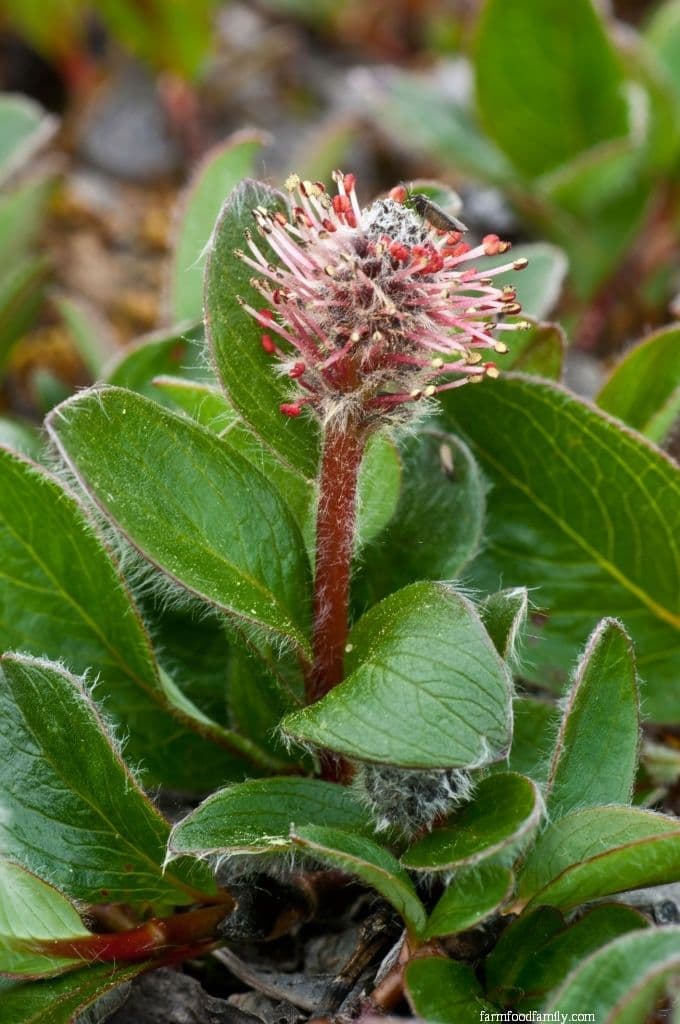
As the name implies, Arctic willows’ native range would be rocky and heavily snowy locations. As a matter of fact, it is one of the few woody plants that only grows in the northernmost parts of the world.
It is a small willow shrub which is perfect for rocky, winter gardens. It has clumps of glossy, dark green leaves, with bicolored stems of red and green, and produces purplish red catkins during spring. It grows to just 5ft max.
4. Bebb Willow (Salix bebbiana)
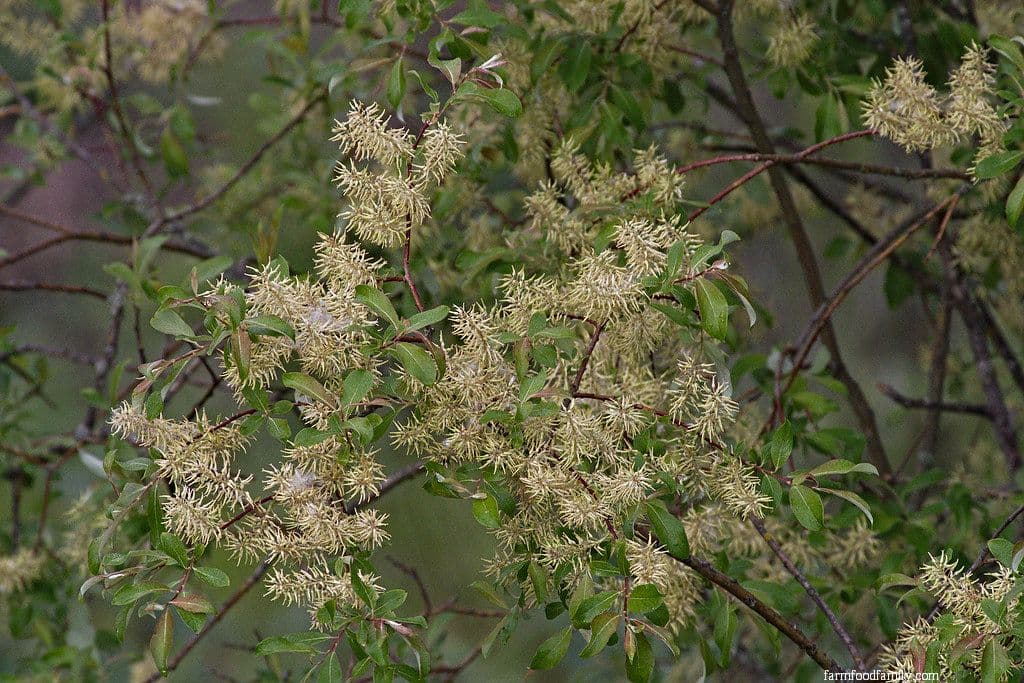
This willow grows from multiple stems, reaching a height in between 10-30ft and usually grows alongside streams, bogs, and lakes. Its dull green leaves are ovate, lancing, and smaller than the leaves of most willow trees. It is also called the diamond willow because the unique diamond marks on its twigs.
The bebb willow is used mainly for carving and woodwork. It is not that popular for landscapes because it is prone to diseases and does not last very long. Nonetheless, once its roots have been established, it is basically drought resistant.
5. Brittle Willow (Salix Fragilis)
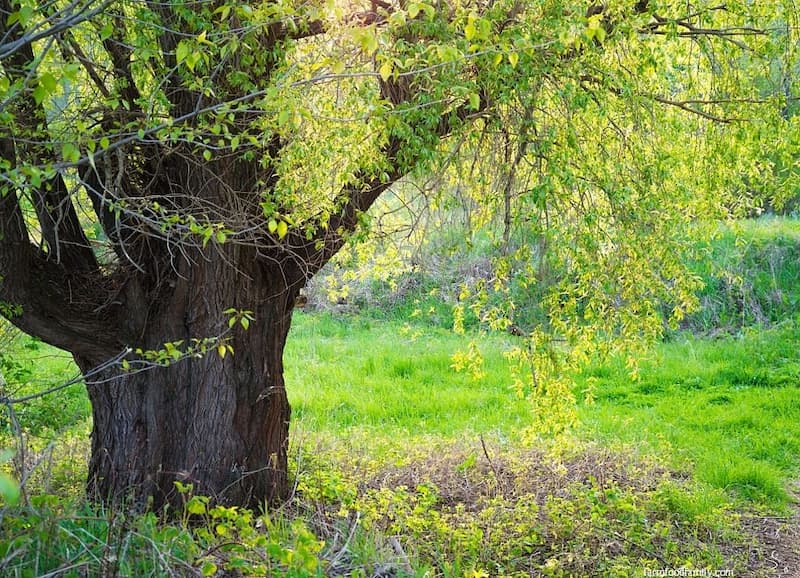
This one is also called the crack willow. It is interestingly called as such because of its distinct twitching sound whenever the branches fall or break. It is sometimes mistaken for the white willow because of its light green, small, and ovate leaves. Unlike some willows, this one does not have a hairy underside.
Nonetheless, male crack willows produce yellow catkins while females produce white ones. It grows to up to 40ft, with twisted branches, cascading in random directions. This one is endemic in Europe and Western Asia.
6. Corkscrew Willow (Salix matsudana Tortuosa)
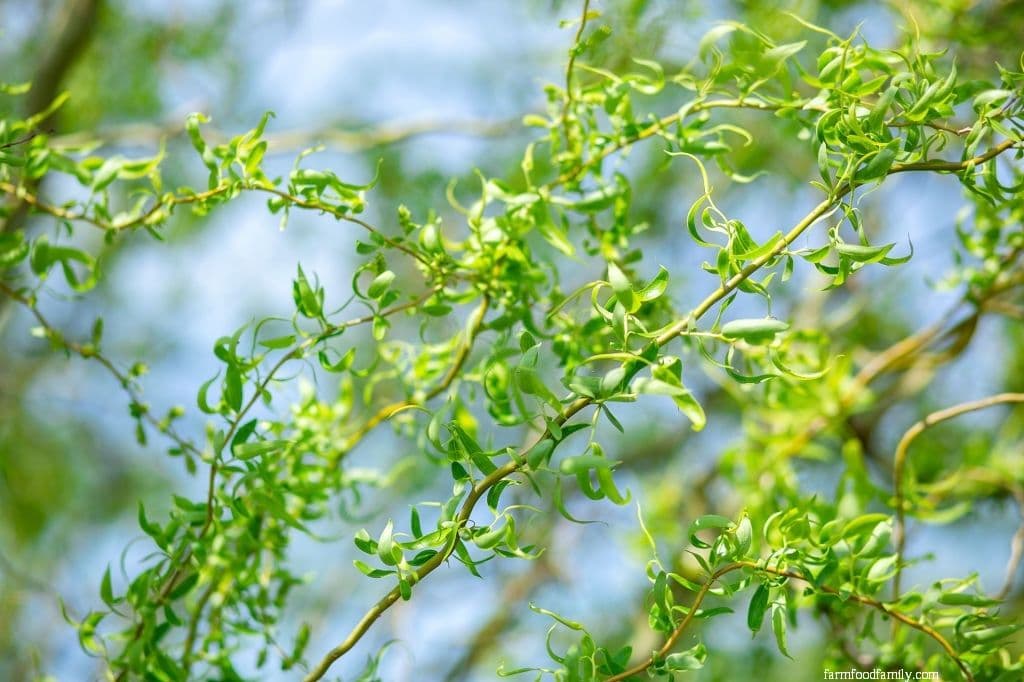
This one is a part of the Chinese weeping willow family. It gets its name for its twisted, upright, dark brown to black branches which is attractive for winter gardens. It has long and narrow leaves, dark brown, furrowed bark and fuzzy, yellow green catkins that bloom during spring.
It grows from multiple, crooked stems and reaches a height of 20-40ft and at least 20ft of shade. As such, it is used for borders but could also be trained to grow low, enough for bonsais and for floral arrangements. It is also called the Scarlet Curls.
7. Dappled Willow/Japanese Willow (Salix integra ‘Hakuro-nishiki’)

This attractive shrub is also called the Flamingo willow or Japanese willow. It is distinct for its variegated, long and pointed foliage with flecks of pink and white all over, arranged in opposites instead of an alternating pattern.
Another distinct characteristic of this willow is that it sheds its colorful leaves during fall and then the stems and leaves turn into a scarlet red color during winter. It is perfect as a border plant or as a focal point in winter gardens. It grows to only 10ft (some cultivars grow to up to 15ft).
8. Dwarf Willow (Salix herbacea)
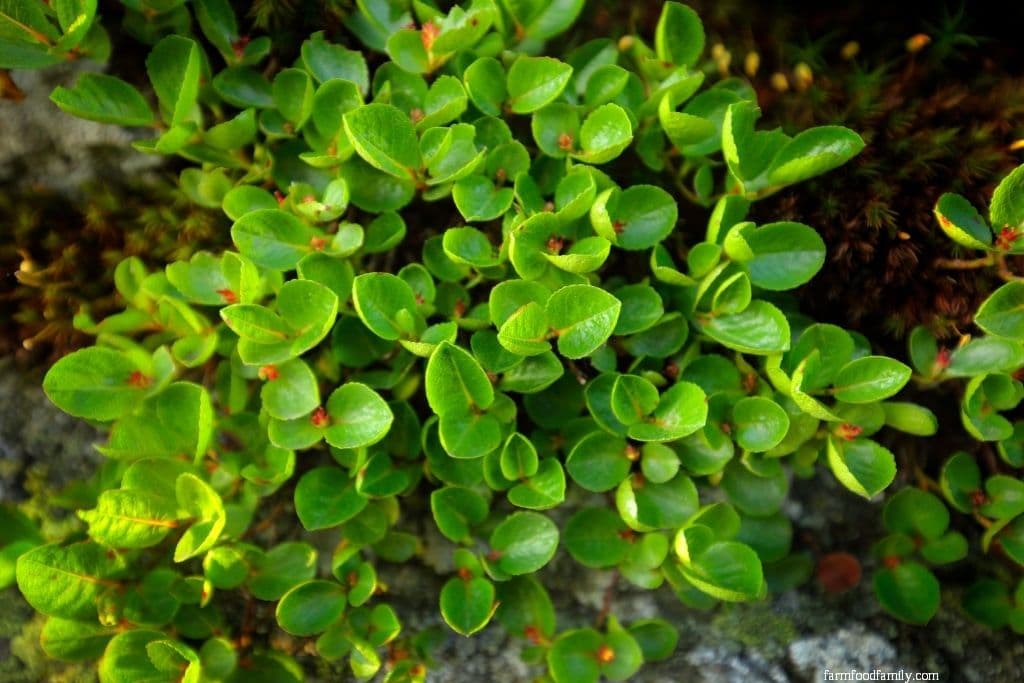
If you want the weeping form of the willow but you have a more compact space, like patios, balconies, and small gardens, dwarf willow is the perfect choice. It is hardier than most willow types as it could tolerate a wide range of soils and climates.
It is distinct for its dark green and twisted foliage, its round shape, glossy texture and finely toothed margins. It also has the signature arching branches but it would not reach the ground. It only grows at a max height of 5ft and is also called the snowbed willow. Male dwarf willows produce red catkins while females produce yellow catkins.
9. Goat Willow (Salix caprea)
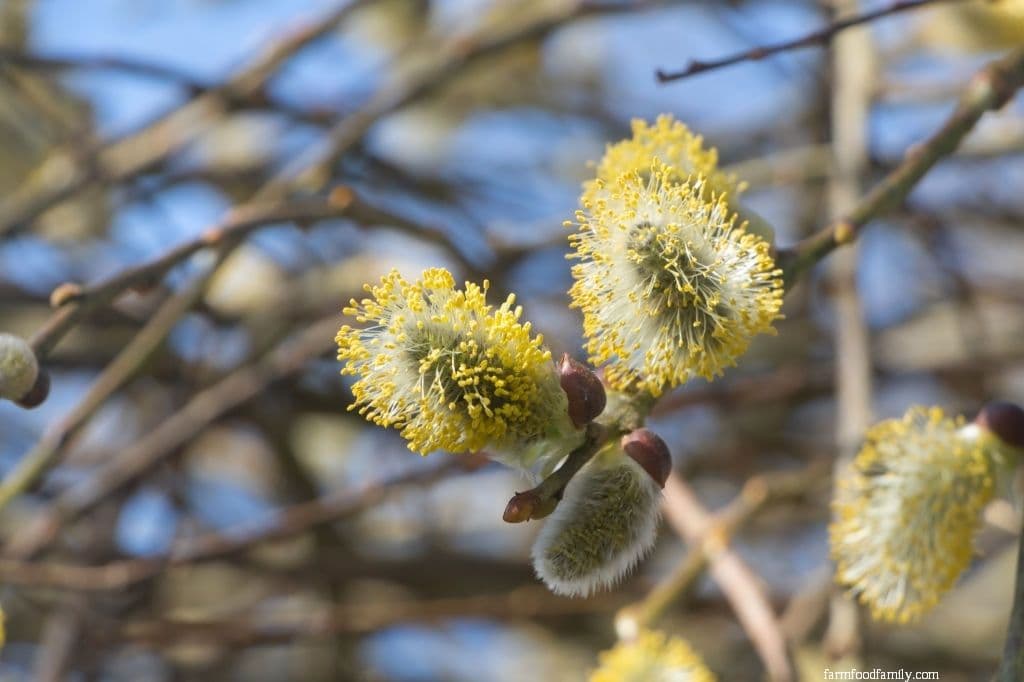
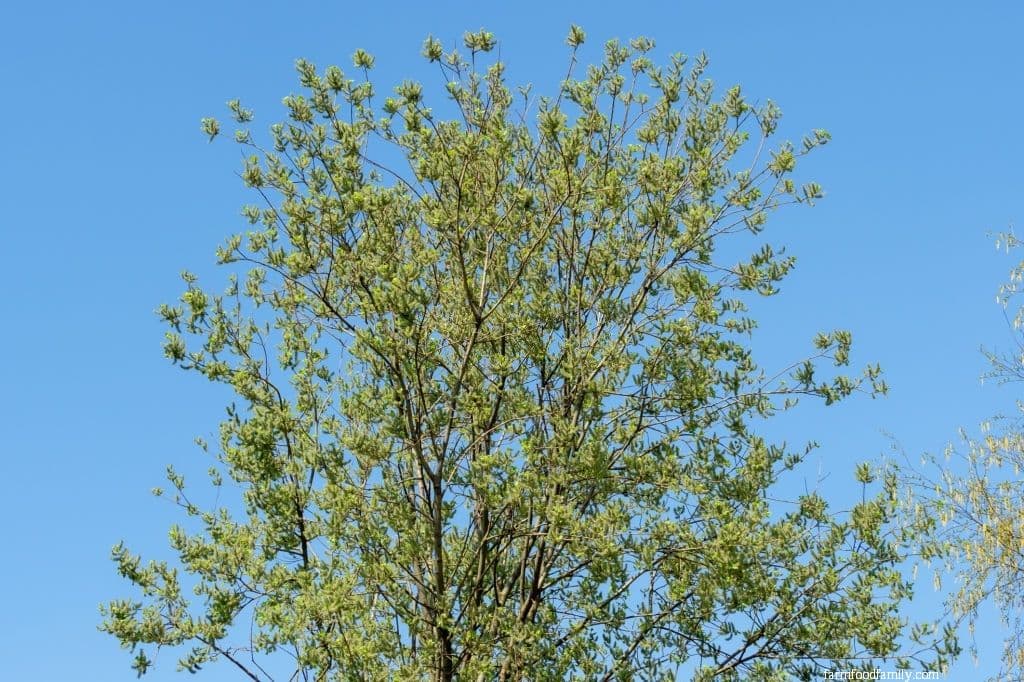
This is another pussy willow known for its oval leaves with pointy ends, dark green color and glossy upper side and waxy undersides due to its whitish gray hairs. Its bark is also notable for its dark grayish brown color and branches that turn smooth in maturity.
It blooms fuzzy, yellow, and green catkins in the spring, grows to up to 30ft, and is used as landscape filler, for hedges and shrubs. Propagating the goat willow requires pollination which is harder than most willows that only require cuttings.
10. Golden Willow (Salix Alba Var. Vitellina ‘Yelverton’)

This one is a hybrid willow, made from cross breeding weeping willow and alba. Its foliage cascades down in a weeping manner, with a dull green color which turns to glossy, deep green leaves as the seasons progress.
In its winter dormancy, its branches sport a striking yellow, orange, and gold color, like the burning bush, making a winter visual display. This is also where it gets its name. It grows up to 70ft with a shade that goes to 40ft. It is good for hedges, borders, and screens.
11. Hooker’s Willow (Salix hookeriana)
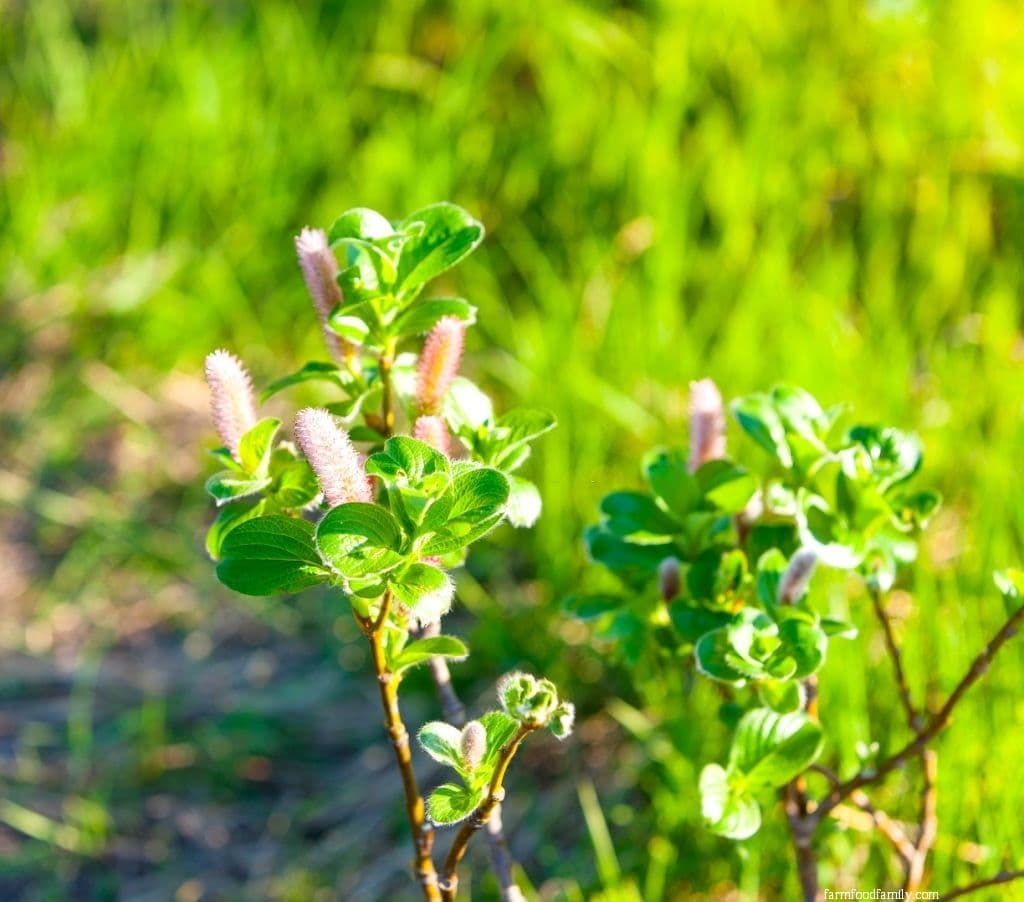
This willow is native to coastal regions, as such, it is also called the coastal willow or dune willow. It could grow to up to 26ft in a bushy growth habit. It creates a dense foliage composed of glossy, and oval shaped deep green leaves.
This one is also a part of the pussy willow family, blooming white catkins during spring. This one can be found in canyons and marshes.
12. Narrowleaf Willow (Salix exigua)
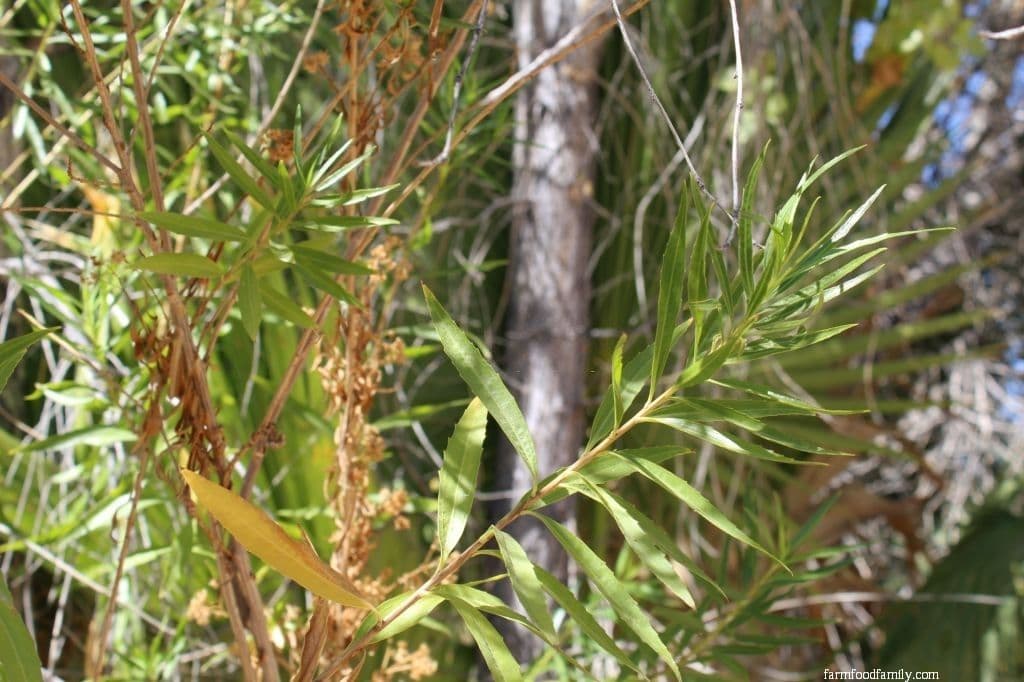
True to its name, it has narrow, lancing, dark green leaves. It is also called the coyote or sandbar willow. While it is a shrubby willow, it is significant because it is used in producing wood poles for construction because of its known flexibility. Growing to up to 15ft only, it is also used in making rustic design furniture.
It has a dark gray bark with vertical furrows. It tolerates drought and flood prone areas as well as a range of climatic conditions. It has been listed as endangered due to the demand for it in construction. Nonetheless, it is still planted as container shrubs used as ornamental plants in home landscapes.
13. PeachLeaf Willow (Salix amygdaloides)

This medium size willow gets its name for its peach like leaves. It grows either from single or multiple stems and grows in between 13-90ft with a spread of 35ft. Its foliage is olive green, narrow, lancing leaves, finely serrated edges and with white undersides.
It produces yellow green catkins in the spring that are less fluffy than the catkins of pussy willows. It is native to Canada and the US, typically found in ponds, streams, and rivers. They are fast growing, planted to fill vast landscapes, and help in soil erosion control.
14. Purple Osier Willow (Salix purpurea)

As the name suggests, the purple willow is distinct for its purple bark at youth which turns dark grey at maturity. It does not grow tall (just reaching 10-12ft). It has the typical cascading branches of weeping willows, with long, narrow, glossy blue green leaves.
Its catkins bloom in the spring, sporting red or purple colors instead of the typical yellow, white, or green catkins. It is planted for hedging and in erosion control. It is also notable for its medicinal properties specifically of salicin, a natural pain reliever, which is found in its bark.
15. Scouler’s Willow (Salix Scouleriana)

This one is cold hardy and could thrive in dry environments unlike most willow types. It grows from upright, multiple, fibrous, dark brown stems, and grows to just 22ft, making it a beautiful landscape shrub. Its leaves are lancing, with a pointed base, wavy, toothed margins, and brown green color.
It is made scenic by its white catkins and hairy fruits. While it is generally used for carving purposes, it is also functional in prohibiting soil erosion so it is mostly planted along riverbanks and streams. It gets its name from its discoverer, John Scouler.
16. Weeping Willow (Salix babylonica)
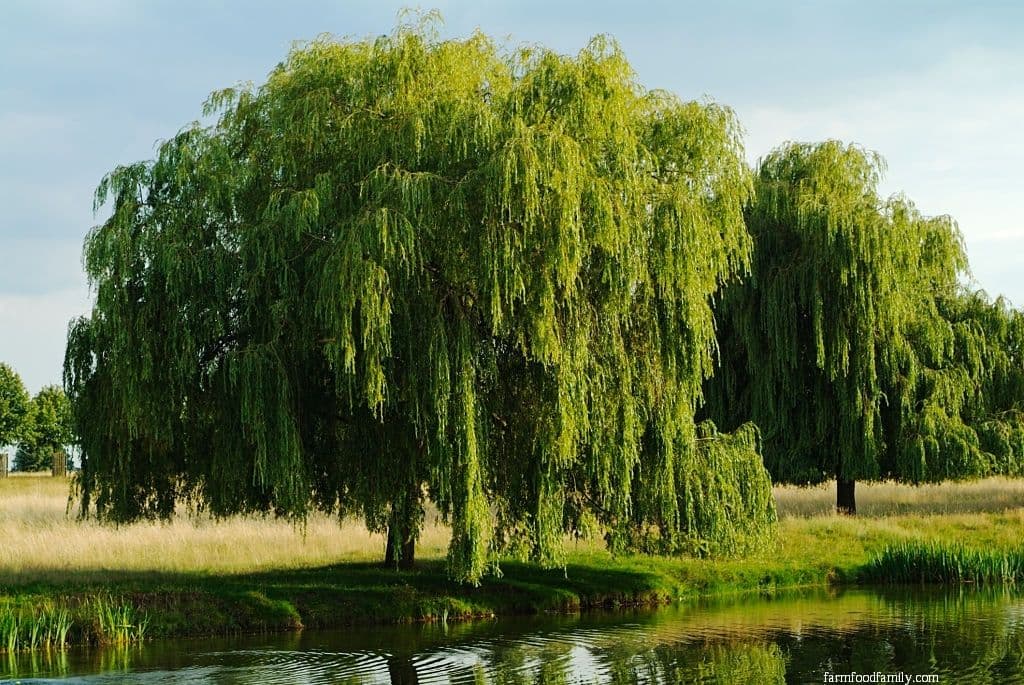
It is also called the Babylon willow and is the most recognizable willow out there. It is native to China and is a fast-growing willow that reaches 80ft at maximum. Its weeping form is due to its pendulous growing habit.
Its leaves are long, narrow, and yellow brown most days but turns bright yellow during winter. It also blooms buttery yellow flowers during spring.
It makes a beautiful focal point in large landscapes or in pond and lake edges. They are however, short-lived, only being around for 30 years but with a fast growth rate of 10ft per year. It is beautiful during windy days as the branches sway with the softest breeze. This is the iconic willow tree from the movies.
17. White Willow (Salix alba)

This one gets its name for its green leaves with white undersides. It has a large size, but it is not popular for landscapes because it is vulnerable to a willow fungus which weakens the wood overtime and gives it a distinct diamond form. Its stems are yellowish to white and drop in a cascading form.
The leaves are also showy, starting bright green at first and then turning to dark green and then golden yellow. It grows in between 50-100ft and the stems are used in basketry. This one is a very fast-growing willow which grows along river and stream banks as well as in ponds.
18. Yellow Willow (Salix lutea)

This one is a native of North America found in lakes and stream banks. It has light green and glossy leaves with an ovate shape but elongated, arranged in an alternating pattern. The stems are reddish green and bloom yellow green catkins during spring. It grows to up to 15-30ft, fast growing, and is good as an ornamental shrub especially along bodies of water where erosion is quite common.
How to grow and care for willow trees

To grow and care for willow trees, here are things that you should be familiar with.
Sun and shade
Willows need four hours of direct sunlight every day. Plant them in locations where they get full sun and partial shade.
Soil
This tree can tolerate all types of soils, but it would thrive best in constantly moist, slightly acidic, and well-draining soils.
Water
During the first year of growing, willows need to be watered every week. As soon as it establishes roots, watering becomes less frequent, only requiring water if the soil becomes too dry.
Fertilizer
Overall, willows do not require fertilizer. But if you see the leaves dying out, a good intervention would be applying a 20-20-20 fertilizer during spring.
Pruning
Regular pruning is required during the willow’s early years. After that, only prune during late winter or early spring to maintain its shape.
Where do willow trees grow?
Willow trees extensively grow in moist locations and where they could get full sun. Geographically, these trees can be found growing all throughout the temperate areas of North America, Asia as well as Europe.
How fast do willow trees grow?
Willow trees are generally fast-growing trees. They have a growth rate of 10ft per year. However, they fall short on lifespan.
Do willow trees have flowers?
Yes. They are technically called catkins. Most willow trees produce green, yellow, and white fuzzy catkins during spring. Some notable ones like pussy willows and the purple willow produce red, purple, and pink catkins.
Do willow trees lose their leaves?
Yes. Willow trees shed their leaves from late fall to early winter. The foliage grows back denser at the sight of spring.
What are willow trees good for?
As have been mentioned, willow trees are good for:
- Ornamental landscaping
- Hedges, live privacy screens, and borders
- Soil erosion control
- Basket making
- Carving
- Alternative medicine (for pain relief, hay fever, respiratory diseases, etc.)
- Nectar production for the honey industry
- Alternative source of flour (some types only)
Hybrid willow trees problems
Willows are not perfect trees, even the hybrid ones. Here are some of the common hybrid willow tree problems that you should be on the lookout for.
- Willow scabs
- Black canker
- Willow blight
- Willow fungus
- Powdery mildew
- Root rots
- Borers
- Aphids
- Gypsy moths
Can you grow a willow tree from a branch?
Yes. You can propagate willow trees from branch cuttings, through pollination or by planting willow seeds. It would require frequent watering during propagation and until it establishes roots.
Should I plant a weeping willow in my yard?
If you have a vast yard, you can. It is a good filler plant, with ornamental value for hedging and borders. It has an aggressive root system though, so you need a lot of space in between if you are thinking of planting other plants around it.
Where to buy willow trees?
Willow trees are relatively everywhere so, expect to find willow tree seeds, seedlings, and cuttings in local nurseries near you. Here are some stores where you could score willow trees.
- Willow Green Acres
- BigFoot Willow
- The Tree Center
- TNN Nursery
- Arbor Day
- Nature Hills
- Amazon
- Garden Goods Direct
- Planting Tree
- Bower and Branch
Related: Types of Cherry trees | Types of elm trees | Types of cedar trees | Types of redbud trees | Types of pine trees

